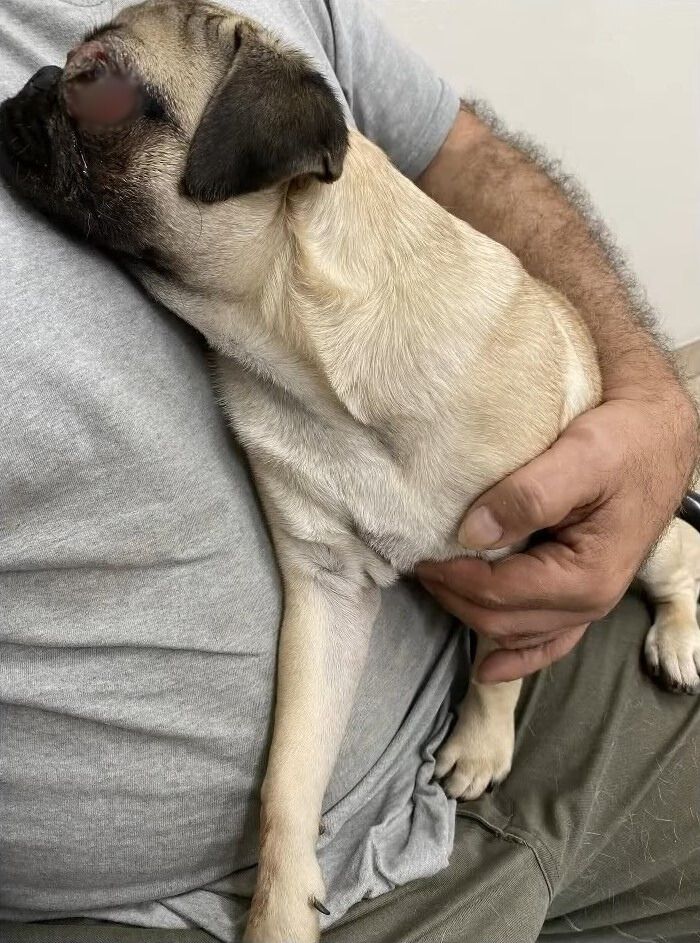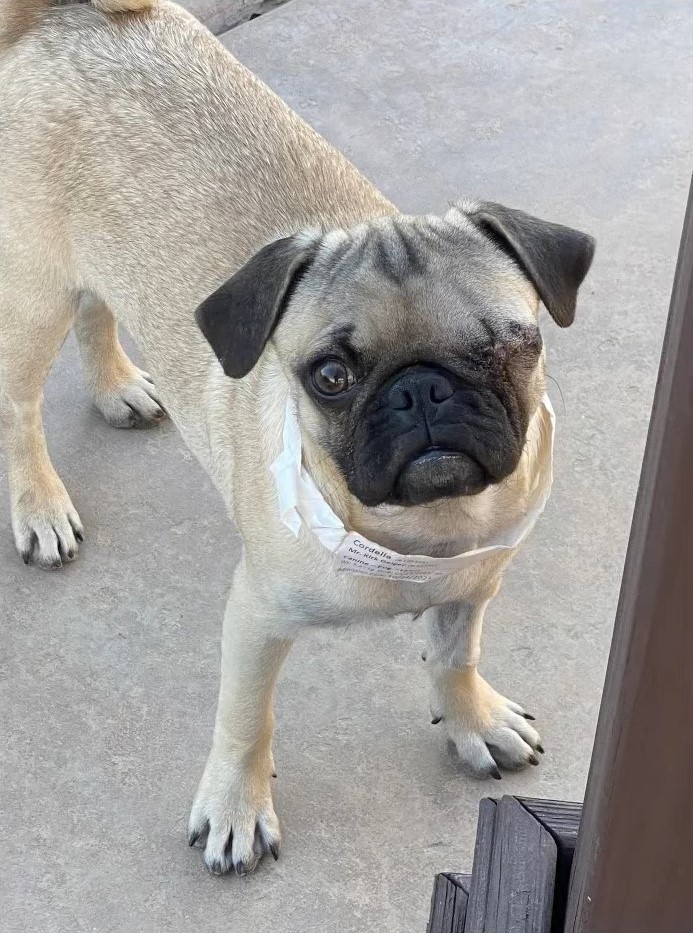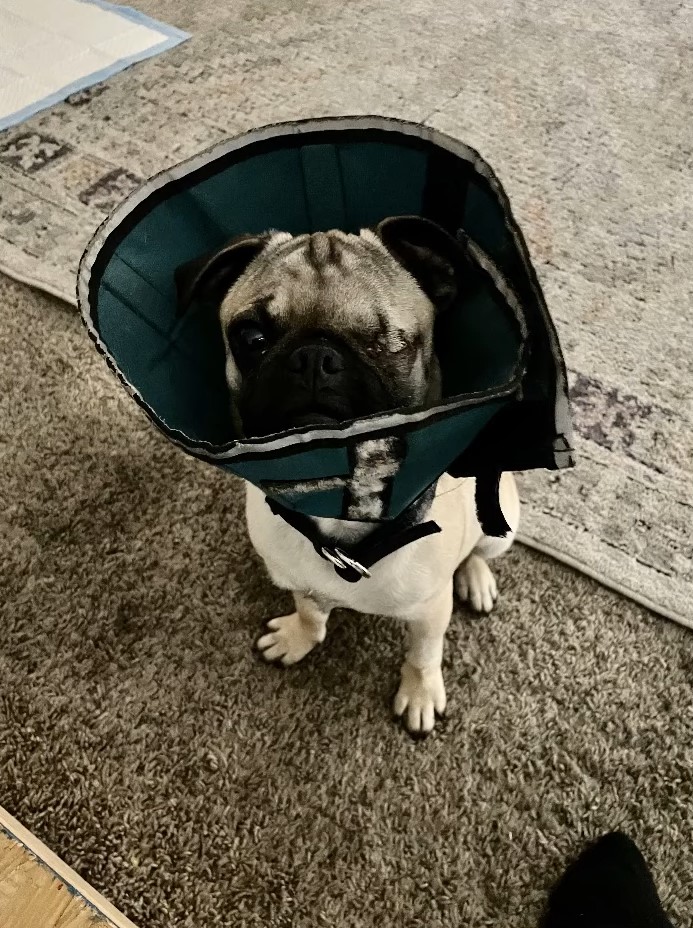Life has a way of throwing unexpected turns our way. There are moments when we feel entirely out of options, yet suddenly, a new chance appears right before us.
When the owners of a 10-month-old female Pug realized they couldn’t pay for the surgery needed to treat their pet’s infected eye, they faced the agonizing decision of having to euthanize her.
Unable to carry out such a heartbreaking choice, their veterinarian took the initiative to contact The Animal Rescue Center of California for assistance.
A Second Chance

Upon learning about this tragic situation, the California rescue swiftly agreed to cover the surgery expenses.
Thrilled with the news, veterinarian Dr. Baxter proceeded to perform the surgery, which turned out to be a success.

Dr. Baxter kindly offered to foster the pup throughout her recovery.
In the warm and loving atmosphere, the pup quickly regained her health and was subsequently welcomed by Giselle’s Legacy to find her forever family.
Though Paisley felt a bit sad to leave Dr. Baxter, she was thrilled to embark on her new journey.

With her undeniable charm, Paisley quickly found her forever home.
She is now thriving, enjoying life with wonderful humans and furry pals who help her forget her past and fully embrace the bright future ahead!

Eye Issues in Pugs
Regrettably, similar to Paisley, many Pugs are at risk of losing their eyes due to various eye-related problems.
Their prominent eyelids make this beloved breed more susceptible to proptosis, a condition where the eye bulges from its socket.
Pugs’ large eyes are also prone to scratches or ulcers on the cornea, often caused by foreign objects, resulting in severe discomfort, redness, and squinting.
Another common issue is cherry eye, where a gland in the third eyelid becomes inflamed and protrudes as a red mass. Surgery is typically needed to treat this condition.
Additionally, Pugs can suffer from entropion, a disorder in which the eyelid folds inward, causing the eyelashes to irritate the cornea, leading to discomfort, tearing, and possible corneal damage.
If addressed early, all these conditions can be effectively treated. This, however, relies on regular veterinary visits and attentive eye care.
For Pug owners, it’s essential to remain vigilant for any signs of eye distress. Symptoms such as tearing, squinting, or redness warrant immediate medical consultation.
A great way to support your Pug is by cleaning the facial folds around their eyes regularly, which helps prevent skin infections and minimizes the chances of eye issues.
